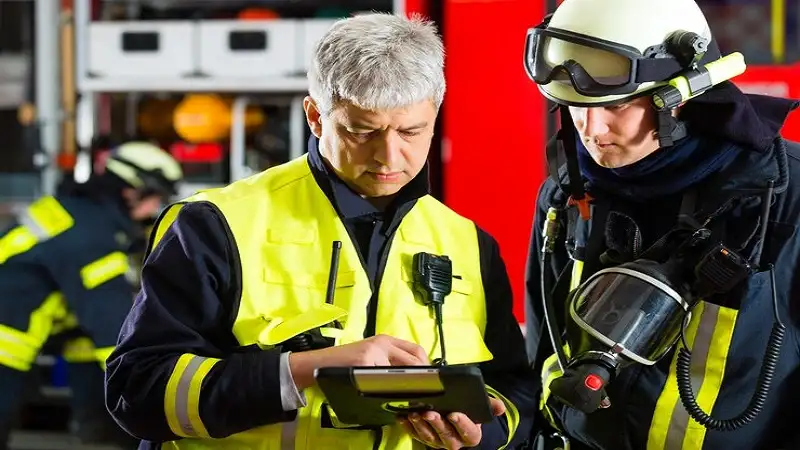In emergency situations, information sharing is crucial to enable quick, coordinated responses that can save lives and minimize damage. However, the need for confidentiality can complicate information sharing among emergency personnel, creating a challenge for responders who must balance privacy concerns with operational efficiency. This article explores how confidentiality requirements impact information flow among emergency teams and the strategies available to manage these complexities.
Why Information Sharing is Essential in Emergencies
In emergencies, seamless information sharing is critical, as it enables:
- Enhanced Coordination: Different agencies, including police, fire departments, and medical responders, can work together efficiently when each understands the others’ roles and resources.
- Informed Decision-Making: Access to real-time data allows responders to assess risks accurately and prioritize their actions.
- Efficient Resource Allocation: With shared information, agencies can avoid duplication of effort and direct resources to areas of highest need.
However, confidentiality needs can complicate information sharing among emergency personnel, especially when strict legal and ethical guidelines protect sensitive data, such as health records.
The Importance of Confidentiality in Emergency Situations
Confidentiality is vital in protecting individuals’ privacy, upholding trust, and maintaining operational security. In many cases:
- Personal Data Protection: Emergency situations may require the use of private data, but confidentiality ensures that this information is not misused or exposed.
- Public Trust: The public’s trust in emergency responders can be compromised if they believe that personal information might be freely shared or mishandled.
- Operational Integrity: Protecting certain information safeguards investigative processes and prevents sensitive operational details from being prematurely disclosed.
Despite these benefits, confidentiality requirements can complicate information sharing among emergency personnel, limiting information types and amounts, slowing response times, and hindering coordination.
Legal and Ethical Considerations in Confidential Information Sharing
There are several laws and regulations that mandate the protection of confidential information in emergencies, including:
- HIPAA in the United States, which restricts access to personal health information.
- GDPR in the European Union, which establishes rigorous standards for data protection and privacy.
- Law Enforcement Guidelines that prevent sharing details that may jeopardize investigations or reveal sensitive law enforcement tactics.
These regulations underscore the need for confidentiality, but they also illustrate how the need for confidentiality can complicate information sharing among emergency personnel when swift data transfer is essential for an effective response.
Challenges in Balancing Confidentiality and Information Sharing
There are practical challenges emergency responders face due to the need for confidentiality, which can complicate information sharing among emergency personnel. Common obstacles include:
- Delays in Information Flow: Privacy regulations may prevent the quick transfer of critical data, which can hinder the effectiveness of emergency responses.
- Partial Information Leading to Ineffective Decisions: Limited access to essential data may result in decisions made with incomplete information, potentially impacting response outcomes.
- Miscommunication Risks: Ambiguity or coded language intended to protect sensitive information can lead to misunderstandings, increasing the risk of mistakes during emergency actions.
Strategies for Balancing Confidentiality and Information Sharing
To improve the balance between confidentiality and information sharing, emergency services can adopt the following strategies:
- Data Anonymization: By removing personal identifiers from data, agencies can share information without compromising confidentiality.
- Secure Information-Sharing Platforms: Using specialized, secure platforms allows for controlled data access, ensuring only authorized personnel see sensitive information.
- Standardized Interagency Agreements: Predefined agreements on how to share data can streamline processes and ensure compliance with privacy laws.
- Regular Training on Confidentiality and Information Sharing: Training helps personnel understand when and how they can share information legally and effectively, addressing the need for confidentiality that can complicate information sharing among emergency personnel.
Technological Solutions Supporting Confidential Information Sharing
Technological advancements can also help to address the need for confidentiality, which can complicate information sharing among emergency personnel. Some promising tools include:
- Blockchain Technology: Blockchain provides a secure, decentralized way to store and share information transparently, ensuring data is accessible only to intended recipients.
- AI and Machine Learning: AI algorithms can help in the rapid anonymization and secure distribution of sensitive information.
- End-to-End Encryption: Encryption ensures that shared data remains secure during transmission, allowing information to be shared in real time without compromising confidentiality.
Conclusion: Balancing Confidentiality and Information Sharing in Emergency Response
The need to maintain confidentiality creates a challenging dynamic in emergency situations, where information sharing is often critical. As we’ve discussed, the need for confidentiality can complicate information sharing among emergency personnel, requiring them to navigate complex legal, ethical, and operational considerations. Through technology, predefined protocols, and secure platforms, emergency services can protect individuals’ privacy while enhancing their capacity to respond effectively.
While achieving this balance is complex, it is essential to the success of emergency responses, as it safeguards both the privacy rights of individuals and the safety of the public. Read More. Famecozy.
